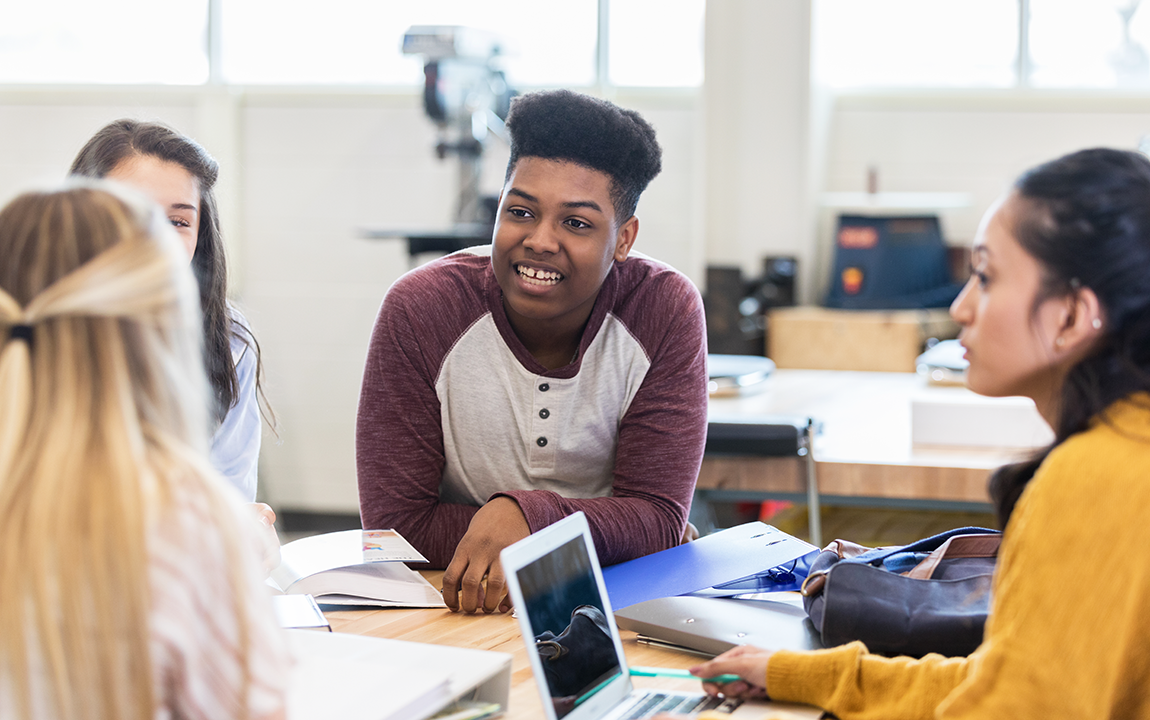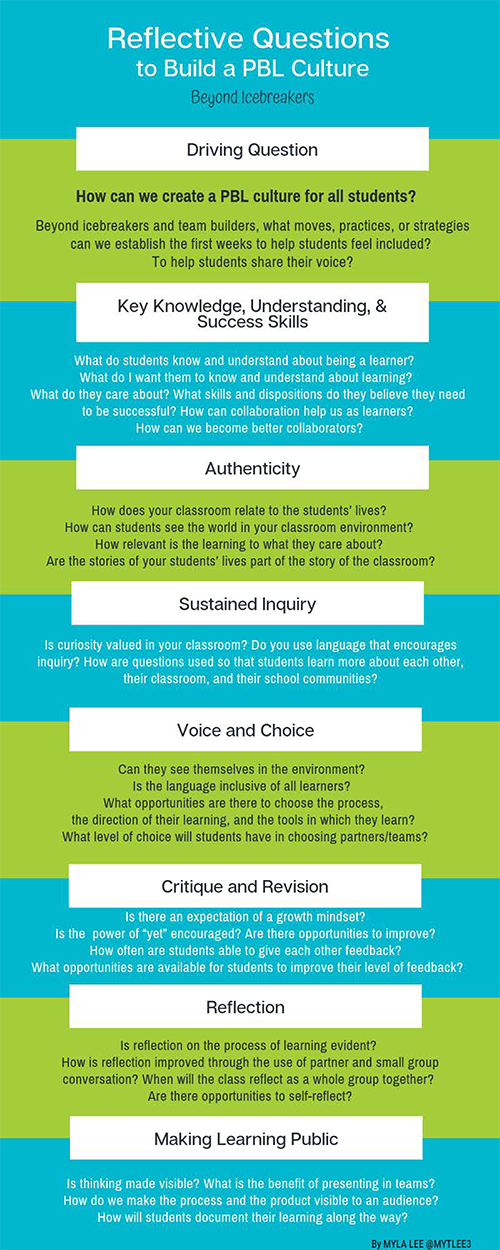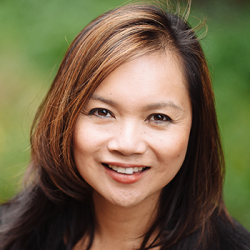
During the first weeks of school, your goal as a teacher is to build a PBL classroom culture with your students.
You want your class to be a team, a community, a family of learners. To that end, you do team builders, energizers, icebreakers--any activity that will get your students to engage with one another. After a couple of weeks, your class should be on the trajectory for creating a learner-centered culture, right?
Like many teachers, I thought those “get to know you” interactions would help unite my individual students into an amazing group of learners. It wasn’t until my own young daughter expressed her apprehension did I view those interactions in a different light. As an introvert, being “forced” to talk to people she didn’t know or trust was emotionally exhausting. She couldn’t wait to escape to the quiet seclusion of a book or the comfort of a loyal friend at lunch or recess. With this new perspective, I began to reflect on my own classroom and ask, “How inclusive were the first weeks of school for ALL my students? What could I do to help my students identify themselves as part of our learning community?”
In the spirit of PBL, I’ve matched questions that I consider when I’m reflecting on my classroom culture with Gold Standard PBL’s Essential Project Design Elements.

However, sometimes I find that I need to utilize intentional strategies to dig deeper into a specific element. What would I need to do to help make the answers to my reflection questions visible and relevant to my students? I’ve used the four ideas in John Larmer’s blog post to help build a PBL culture in my classroom. As with most of the various protocols, routines, and ideas I’ve facilitated to build our classroom culture, many of them weave in more than one of the above elements and address several reflective questions.
Asking myself these reflective questions provides valuable information about the PBL culture we’re building in our classroom.
The following are examples to include in your toolkit for building a PBL culture:
Relationships (Authenticity)
How will I know my students' lives? How does your classroom relate to the students’ lives?
Actively listening to your student not only models how they should listen to others, but it is a sign that you care about them and that they matter. Greeting them every morning is a social-emotional way to acknowledge them. Asking probing questions about students’ lives outside of school and learning about their interests informs you about possible connections you can make to their learning. Another way to learn more about your students is to have them express themselves through the Color, Symbol, Image Thinking Routine. Reading a picture book like Jacqueline Woodson’s The Day You Begin and having students do a watercolor painted reflection answering “How are you feeling this first day of school?” helps students make their feelings visible.
Storytelling (Voice and Choice)
Can they see themselves in the environment? Is the language inclusive of all learners?
A former student of mine shared that her favorite memories of our class were the stories I shared about my childhood and about my own family. She said it made our lessons come alive as she connected the learning with someone she cared about, her teacher. Ask students to bring in family photos or collages of family members and display them on the classroom walls. Provide students an opportunity to share a story about their family in partners or small groups. In addition to the stories students bring to the classroom, a diverse collection of books on the shelves that are “windows and mirrors” to varied cultures helps students identify that they belong. What artifacts in the classroom share the diverse stories of the learners?
Language (Authenticity)
How does your classroom relate to the students’ lives? How relevant is the learning to what they care about?
Ron Ritchhart identifies the language of the classroom in seven categories. The language of community and the language of identity particularly resonate for me in the first weeks of school. As Ritchhart explains, the language of community as a “pronoun choice can communicate a sense of inclusiveness, collaboration, and community (we, us, our); or it can deliver a message of division, separateness, and control (I and you).” Using the language of identity helps students “communicate that it is learning to do and act authentically that matters.” A student’s name is their identity. Pronouncing it correctly shows respect and care. Using FlipGrid to have students individually record their names creates a digital collage for everyone in the class to learn from. Intentional word choices help students identify themselves in the classroom and connect the world authentically to their learning.
The Power of Yet (Critique and Revision)
Is there an expectation of a growth mindset? Is the power of “yet” encouraged?
Part of being open to critique and feedback is knowing that you can still grow as a learner. I entered a 4th-grade classroom and saw a poster entitled “Things We Can’t Do…” Scattered around the poster was a brainstorm of words by the students of what they can’t do, and in the middle of the poster, in large capital letters, was the word “YET.” I asked a student what that poster represented; she said, “It’s the power of ‘yet.’”
Purposeful and Meaningful Tasks (Sustained Inquiry)
Is curiosity valued in your classroom? Do you use language that encourages inquiry? How are questions used so that students learn more about each other, their classroom, and their school communities?
Lastly, if students are to collaborate, is it for purposeful tasks? For example, instead of icebreakers, could students do a STEM activity in a collaborative group with a definite outcome or deliverable? Perhaps the first couple weeks could be a project-based learning unit that is focused more on the success skills and building culture, and less on the content. It could help scaffold the process of PBL while creating a meaningful opportunity to spark inquiry and to collaborate. For students like my daughter, the success skills can be the most challenging part of the project--how can you create positive conditions for an introverted student?
Is my message, “Never do another icebreaker”? No.
In fact, I love icebreakers! But beyond the activities and beyond the first weeks of school, if our purpose is to build a learner-centered culture in our classrooms, we need to ask the learners who call us their teachers what will energize, build, and connect them. Don’t have an answer? Not yet!

